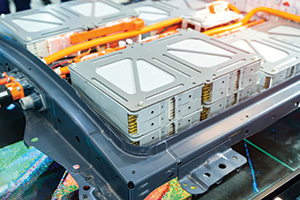

Leak testing has come to be known as an essential quality test in the automotive industry for decades. A single car has more than 30 000 parts and hundreds of those parts require leak testing to make sure they are airtight. A transmission alone has 800 different parts with seven main components. Many of these individual parts and components need to be leak tested before the final assembly of the transmission is tested, including hydraulic system parts, seals and gaskets, pumps, turbines, torque converters, throttles and the computer.
As the automotive industry has evolved, so have leak testing technologies. In the early days of vehicle manufacturing, cars were composed of mainly mechanical components and simply dunking a metal part underwater and looking to see if bubbles emerged was considered to be a sufficient leak test. As production became more automated, there became a greater desire to integrate automatic leak tests into assembly lines to speed up testing processes. The still-popular pressure decay leak testing method is commonly automated into production lines to pressurise a part and determine the leak rate by measuring for a drop in pressure.
As additional safety features got incorporated into cars, like air bags, leak testing methods like dual-sensor leak testing and tracer gas sniffing became more prevalent. The number of electronic sensors and computers in cars has also greatly increased in the last decade. Vehicle electronics have to be completely sealed to keep out any dust and condensation that could short out the circuits. Since many of these types of sensors do not have an opening, a sealed component ingress leak test is often used. This testing method involves putting a part into a pressurised chamber and a pressure decay leak tester can measure if air is leaking into the test part.
Although the safety and electronics wave in the automotive industry is far from over, the current trend is the mainstream emergence of hybrid and electric vehicles. The most vital leak test involved with this type of vehicle manufacturing is battery leak testing. Electric vehicles, like the Nissan Leaf, can contain around 200 battery cells. With so many cells containing reactive chemicals, like lithium, organic solvents, polymers and nickel manganese cobalt, it is a safety necessity to leak test batteries at every step of the production process − from the battery cell to the module to the complete battery tray.
Because most electric vehicle batteries contain liquid electrolytes inside semi-flexible packaging, traditional pressure-based leak testing is not ideal due to potential safety and repeatability issues. Although ATEQ has been a preferred provider of dual-sensor differential pressure decay leak testing instruments by many automotive component manufacturers, the company has come up with a new leak testing technology perfect for testing battery pouch cells.
ATEQ’s Ioniq electrical leak tester has been used successfully by customers for years, primarily in the plastic packaging industry, for high-speed testing of small plastic parts, like bottle caps. Now it has been discovered that a similar test method can also be customised to test electric vehicle battery cells for leaks, in particular pouch battery cells.
Based on the Ioniq, ATEQ’s new patented B28 tester offers a safe low ionisation voltage to ionise oxygen molecules in the air around the battery cell. If the battery cell is properly insulated, the instrument will show a 100% reading. If there is a leak in the battery insulation, ionised oxygen molecules will be able to flow through the hole and the ions will connect to the inside of the battery cell without igniting it. This will show a 0% insulation percentage reading on the instrument and the operator or machine can then reject the part. The B28 can be automated into a production line to support fast pass/fail testing of the cell. The faulty part could then be taken to a rework bench for manual leak localisation testing by using the Ioniq’s testing wand to find where on the cell the testing needle reads a low percentage on the instrument.
| Tel: | +27 83 271 6848 |
| Email: | [email protected] |
| www: | www.ateq.com |
| Articles: | More information and articles about ATEQ South Africa |

© Technews Publishing (Pty) Ltd | All Rights Reserved